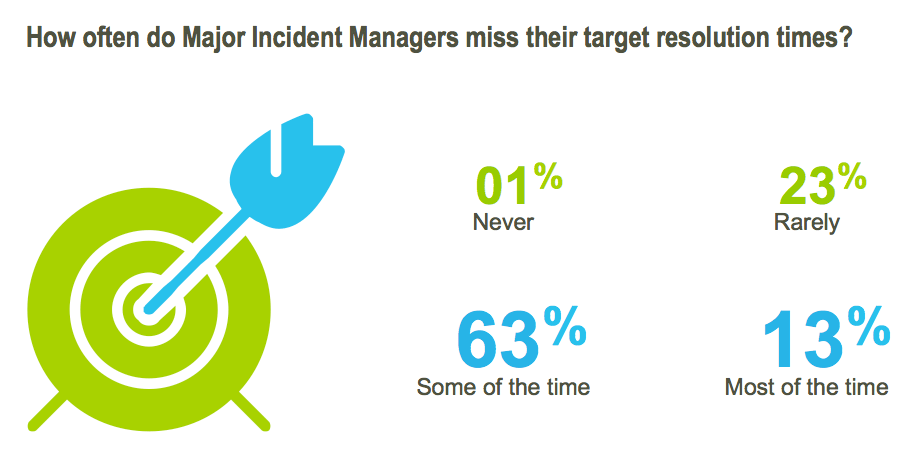Find the Fixers for a Faster Fix

In my last blog, Your Peers at a Major Incident Roundtable, I covered highlights from a discussion during a recent xMatters Executive Roundtable in the heart of London. This discussion was about the first step toward faster MTTR (mean time to resolution): defining Major Incidents. Once you know how to identify a Major Incident, the next step is proactive communication: assemble the right people, or find the fixers, to solve the problem and initiate a documented resolution process. Our experts’ processes were all unique as they are dependent on industry, personnel, and risk tolerance.
The right team can move mountains
How quickly an organization can initiate resolution procedures greatly influences its MTTR. Here are the facts to consider:
- 60% of organizations need at least 15 minutes to determine the right person to contact
- 45% of businesses are negatively affected if IT is down 15 minutes or less
- 76% of companies that set target resolution times for major incidents miss those times
Source: Major Incident Management Trends: 2016 Survey Report

How often do major incident managers miss their target resolution times?
Find the fixers
Every organization should have documented proactive communication processes to keep internal stakeholders informed of progress, particularly those who might be client-facing or senior management who will be scrutinized by external audiences (media, shareholders and customers).
Bringing these different groups together can prove challenging in itself. Conference calls might work for small groups to discuss regular occurrences, but major incidents often require larger, more disparate groups who might not be used to working with one another and might use different levels of technical jargon.
Industry and environment matter too. In retail, for example, there are a number of employee groups who may be involved in a business issue – from production and warehouse to the shop floor. Although the teams sending out the message may be behind computers for much of their day, others might be less connected – particularly if their job role is more physical or requires them to be in different locations. Our experts told us that mobile devices such as smartphones and tablets can help reach these individuals who may be working remotely.
It’s not just about the people.
Once you have the best people identified, you need to be sure you are leveraging the right technology to reach them most efficiently.
Our experts were quick to tell us to include these technologies as you develop your process:
- Monitoring systems that can uncover events quickly
- Service desk applications to maintain a system of record throughout the incident
- Enterprise communication platforms designed to engage the right individuals or groups
Ready to learn more? I suggest you check out the xMatters Major Incident Management Survival Kit.
Stay tuned: my final blog in this series will discuss how multiple communication channels can be both a hindrance and an opportunity for Major Incident managers everywhere.